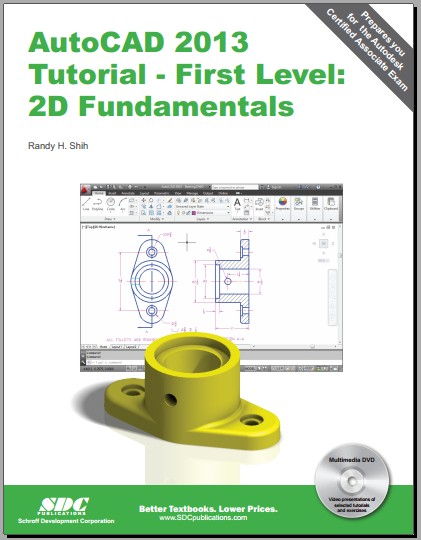AutoCAD 2013 tutorial book – Randy H. Shih (Oregon Institute of Technolog)
OVERVIEW
Learning to use a AutoCAD system is similar to learning a new language. It is necessary to begin with the basic alphabet and learn how to use it correctly and effectively through practice. This will require learning some new concepts and skills as well as learning a different vocabulary. Today, the majority of the Mechanical CAD systems are capable of creating three-dimensional solid models. Nonetheless, all CAD systems create designs using basic geometric entities and many of the constructions used in technical designs are based upon two-dimensional planar geometry. The method and number of operations that are required to accomplish the basic planar constructions are different from one system to another. In order to become effective and efficient in using a CAD system, we must learn to create geometric entities quickly and accurately. In learning to use a CAD system, lines and circles are the first two, and perhaps the most important two, geometric entities that one should master the skills of creating and modifying. Straight lines and circles are used in almost all technical designs. In examining the different types of planar geometric entities, the importance of lines and circles becomes obvious. Triangles and polygons are planar figures bounded by straight lines. Ellipses and splines can be constructed by connecting arcs with different radii. As one gains some experience in creating lines and circles, similar procedures can be applied to create other geometric entities. In this chapter, the different ways of creating lines and circles in AutoCAD 2013 are examined.
CONTENT
Section 1: Controlling the Display in Drawings
- Precision
- Zoom Extent
- Drawing LIMITS
- Status Bar
- GRID Display
- PAN Realtime
Section 2: Creating Basic Drawings
- Format
- Units Setup
- LINE command
- Coordinates
- Interactive Input method
- SNAP Option
- World space
- User coordinate system
- World coordinate system
- UCS icon Display
- TTR, circle
- Relative Coordinate
- Coordinate systems
- Cartesian coordinate system
- Absolute coordinates
- Positions, defining
- LINE, Close option
- CIRCLE command
- TTT, circle
- ARC command
Section 3: Manipulating Objects
- ERASE command
- Selection window
Download AutoCAD 2013 tutorial book file pdf
